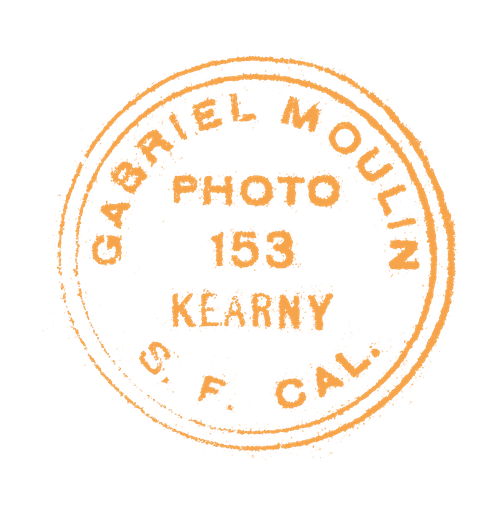About
Moulin Studios is a historical archival-quality photography studio. Began in 1909 by Gabriel Moulin, Moulin Studios’ distinct images and techniques have been preserved through three generations of Moulin career photographers– Irving Moulin (son), Raymond Moulin (son) and Tom Moulin (grandson and current owner). A hundred years later and Moulin Studios has transformed into a one-of-a-kind stock photography studio.
The Moulin Studio archives contain over 10,000 unique photographs– many never published or seen by the public. The archives feature photography from the United States and abroad, with unique and rare peaks into the exterior and interiors of many retail, commercial, and architectural spaces. The archives also boast thousands of photographs of historical, political and culturally significant events, both locally and abroad.
For requests on specific locations, subjects or events please contact Jean Moulin at jean.e.moulin@gmail.com.
History
Much has been written about the history of San Francisco and many have photographed San Francisco, but none have captured the city over such a long period of time, and recorded it as artistically and as faithfully as the Moulin family. Nowhere is there a more beautiful historic record of San Francisco from the 1880s to the present then in their archives.
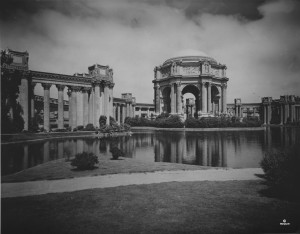 Gabriel Moulin was born in San Jose in 1872 of German and French parents. When he was twelve, the family moved to San Francisco. He left school to become a photographer, eventually finishing school at night. He went to work as an assistant with I.W. Taber, the City’s leading photographer. The art of photography was still in its infancy, and most photographers were very secretive about their techniques. Gabriel was fortunate to have access to a studio where he could experiment and acquire the photographic secrets. During the day he earned his $12 per week salary, and by night learned developing and printing from the old timers in the lab.
Gabriel Moulin was born in San Jose in 1872 of German and French parents. When he was twelve, the family moved to San Francisco. He left school to become a photographer, eventually finishing school at night. He went to work as an assistant with I.W. Taber, the City’s leading photographer. The art of photography was still in its infancy, and most photographers were very secretive about their techniques. Gabriel was fortunate to have access to a studio where he could experiment and acquire the photographic secrets. During the day he earned his $12 per week salary, and by night learned developing and printing from the old timers in the lab.
By the 1894 Midwinter Fair in Golden Gate Park, young Gabriel had become an accomplished photographer. Approaching the turn of the century, San Francisco offered many visual attractions for the young photographer. The heavy equipment Moulin carried about the City did not dampen his enthusiasm, even while climbing the steep hills.
In 1898 Gabriel Moulin was asked to photograph at the Bohemian Club’s encampment on the Russian River, and to make studies of the majestic redwood trees along the California coastline. Because of the contrast between the bright light and the black inky shadows that the trees cast, and the lack of modern photographic filters and equipment, photographing the redwoods was a challenge. Gabriel was able to master the shoots by using exposures of ten seconds to minutes. His masterful techniques in developing established Gabriel’s reputation as the “Redwoods Photographer.”
Shortly before 1900, Gabriel left Taber to join in forming R.J. Waters and Co. This association lasted until April 18, 1906— the day of the San Francisco earthquake and fire— when Gabriel pleaded with Waters to move all their precious negatives from their Ellis Street studio to save them from the advancing fires. Stubborn and unrealistic, Waters refused. Within hours, the entire collection, a priceless, irreplaceable visual history of San Francisco, was destroyed. That day, Gabriel began his career as an independent photographer, and many of the dramatic shots of the earthquake’s aftermath established him as one of the City’s most outstanding and creative photographers.
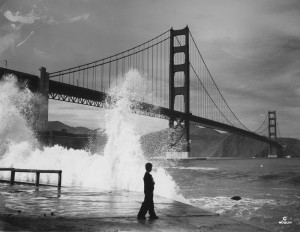 Gabriel Moulin was a very innovative and progressive photographer. Always a perfectionist, he sought to capture a perfectly composed photograph on his ground glass using his convertible lens (5” to 19”); never resorting to gimmickry or “arts” techniques, he strove to produce pure sharp images. Unlike other photographers, he did not create perfection in the photo lab by cropping the photo or embellishing the negative, but captured it with his camera, creating a perfection of balance, of framing, of vanishing point, and depth of field. This sense of balance and composition was the legacy he passed on to his sons, Irving and Raymond.
Gabriel Moulin was a very innovative and progressive photographer. Always a perfectionist, he sought to capture a perfectly composed photograph on his ground glass using his convertible lens (5” to 19”); never resorting to gimmickry or “arts” techniques, he strove to produce pure sharp images. Unlike other photographers, he did not create perfection in the photo lab by cropping the photo or embellishing the negative, but captured it with his camera, creating a perfection of balance, of framing, of vanishing point, and depth of field. This sense of balance and composition was the legacy he passed on to his sons, Irving and Raymond.
During the Panama-Pacific Exposition in 1915, Gabriel was the official photographer for the Palace of the Fine Art. He had been experimenting with the new Lumier color plates, and had refined the process so well that many of the prints he made of the original art on exhibition were sold at the Palace of the Fine Arts.
When Irving and Raymond began to show an interest in photography both boys took photographs at their school functions and developed them at their father’s studio. While working as an editorial staff member of the Daily Californian at the University of California at Berkeley, Irving took the majority of the photographs for the school paper. Raymond meanwhile went to work in his father’s studio.
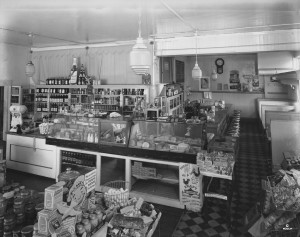 Irving joined his father in business in 1923. Raymond, however, sought experience outside the family business, and in 1927 took a job in Los Angeles with the publishers of Pictorial California and traveled the state in a photographic and sales capacity. After returning to San Francisco toward the end of 1928, he worked at Californias Incorporated, an organization promoting travel in the still sparsely populated state, and briefly became a cruise photographer on a three-month trip to the Orient, South Pacific, and Australia. He returned in 1930, and shortly thereafter rejoined the family business.
Irving joined his father in business in 1923. Raymond, however, sought experience outside the family business, and in 1927 took a job in Los Angeles with the publishers of Pictorial California and traveled the state in a photographic and sales capacity. After returning to San Francisco toward the end of 1928, he worked at Californias Incorporated, an organization promoting travel in the still sparsely populated state, and briefly became a cruise photographer on a three-month trip to the Orient, South Pacific, and Australia. He returned in 1930, and shortly thereafter rejoined the family business.
Throughout the years, Moulin Studios has been in the forefront of innovative photography. Gabriel was always experimenting with photographic techniques— regulating the contrast of light and dark, varying exposures, trying new ways to develop negatives, and striving to capture the perfectly framed, perfectly balanced photograph. In 1933 Irving pioneered the use of photography for retail advertising in San Francisco that used illustrated advertising was a Moulin client for conversion of their photographs through the studio’s line techniques. Raymond, meanwhile, had just designed an aerial camera for Moulin Studios and began making panoramic photographs of the City.
Moulin Studios was commissioned as the photographers for the Golden Gate and San Francisco-Oakland Bay Bridges. The mighty steel spans created breathtaking lines and artistry in their different phases of construction. The mighty steel spans created breathtaking lines and artistry in their different phases of construction. Though Gabriel took many of the panoramic shots of both bridges, Raymond did most of the photography on the bridges themselves. Fearlessly climbing up towers and daring to negotiate catwalks, Raymond captured innumerable priceless photographs. One of his shots of the Bay Bridge was used on a postage stamp issued in 1942.
By the late 1930’s, Moulin Studios was the major force on the West Coast in commercial and portrait photography. Although Gabriel worked out of his Kearny Street studio until his death, Moulin Studios purchased the building at 181 Second Street in 1937 and converted it into the finest photographic studio in the West. The studio was so big the brothers once drove a Greyhound bus into it and set up a travel scene around it. Always in search of the unusual or unique photograph, the Moulins have cranes and helicopters, climbed to the tops of buildings and hills, and Raymond even rode the last steel beam as it was lifted up to the top of the 450 Sutter Building.
Moulin Studios has been involved in many varied projects. During World War II, they worked nights reproducing and enlarging maps and charts for the Department of Defense. Raymond traveled the United States taking travel pictures for Greyhound’s yearly calendars. They have photographed every president of the Bank of America, and Irving took the picture of A.P. Giannini that was later reproduced on a 25¢ postage stamp. In 1950, they added a complete motion picture studio, and in 1936 had begun to create photomurals, then coming into vogue for interior and exterior design. The studio was official photographer for the 1939 Golden Gate International Exposition.
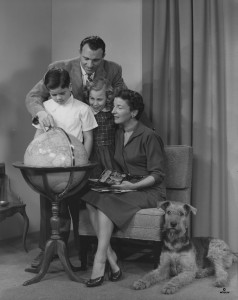 Gabriel Moulin died in 1945, after more than sixty years as a photographer. He had seen his beloved City through the most dynamic phase of its growth, and had watched it grow from a boisterous boomtown to a cosmopolitan metropolis. After Gabriel’s death, Irving and Raymond closed the Kearny Street studio, Gabriel’s studio since he had started in business for himself almost forty years before.
Gabriel Moulin died in 1945, after more than sixty years as a photographer. He had seen his beloved City through the most dynamic phase of its growth, and had watched it grow from a boisterous boomtown to a cosmopolitan metropolis. After Gabriel’s death, Irving and Raymond closed the Kearny Street studio, Gabriel’s studio since he had started in business for himself almost forty years before.
In 1957 Irving relinquished his share in the business, although he continues to do some work for a few of his favorite clients. Raymond’s oldest son, Tom, began working in the family business in 1949. In 1972 Raymond and Tom moved the studio from its Second Street location to Green Street. Raymond continued working until 1977 when he retired to his home in Hillsborough where he had a beautiful view of the San Francisco skyline, and still picked up a camera whenever the studio needed him.
Gabriel taught his sons, who in turn have taught their sons, to look at nature or a scene on the street and recognize in it the balance of elements that create a beautiful photograph. Strength of light and shadow and the dimensions created by it has always been a characteristic of Moulin photography. The perfect photograph to a Moulin photographer is a perfection of line, composition, and contrast of light and dark— a photograph to make you stand back and say “ahh!”

